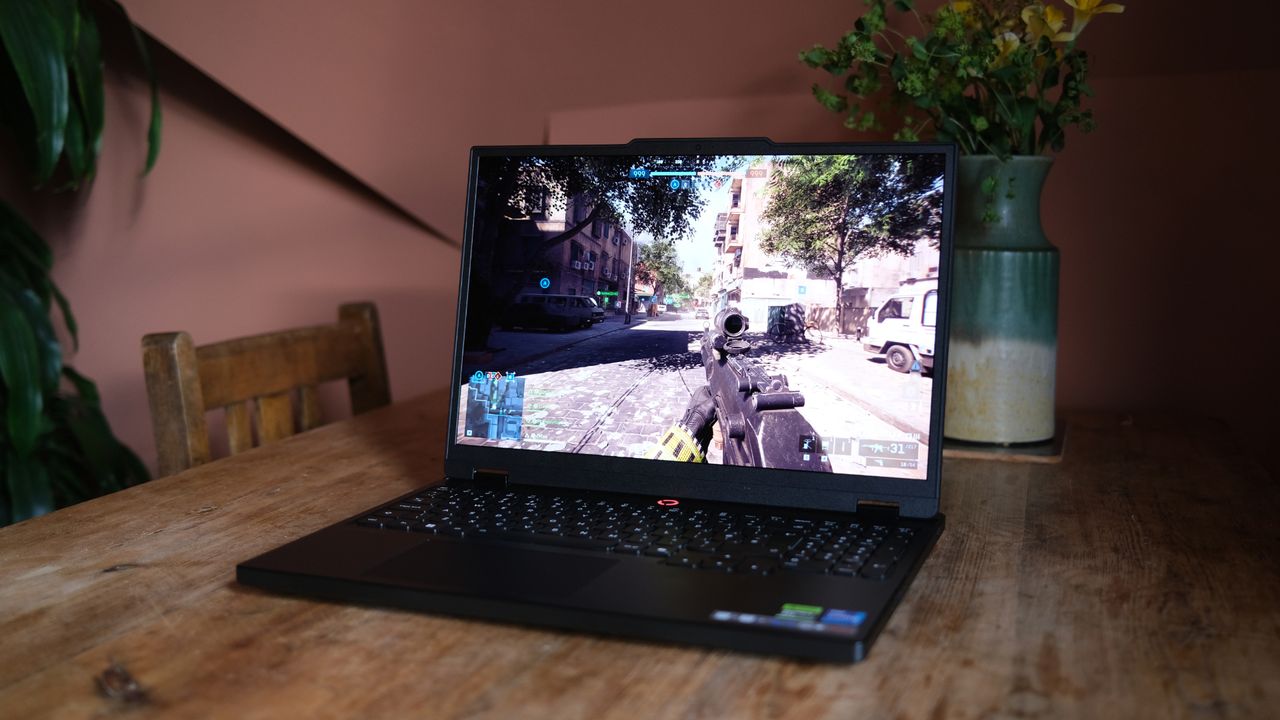
When you test as many of the best gaming laptops as I have in 2025, it can get easy to forget just how expensive they are on average.
Particularly if you want to hop on the latest generation of Nvidia's GPUs and enjoy the latest features, such as frame generation. Then it can be a slippery slope that ends with you feeling like you need to spend multiple thousands to obtain good value.
Well, here's Lenovo to underline the fact that, even in 2025, that doesn't have to be true. Its 10th generation Legion 5 laptop offers the chance to get a machine with an RTX 5060 in it, including a lovely OLED display, for an absolutely bargain price.
So, surely something has to be awry? Fortunately not, as Lenovo has rolled out an bargain banger in this latest Legion laptop. It's my top recommendation for those who demand top performance without paying top dollar.
Price and availability
Laptop prices tend to vary quite a lot, but the Lenovo Legion 5 starts (at the time of writing) from £1,188 here in the UK and $1,119 in the US.
It's the sort of machine that will likely fluctuate a little in price, though, while you can also configure it to be quite a lot pricier. The version I tested comes in at a few hundred extra, with a few upgrades to its components accounting for that hike.
Either way, you can grab the Legion 5 (Gen 10) from a wide range of retailers right now, including directly from Lenovo itself, so there's no scarcity to worry about.
Design and specs
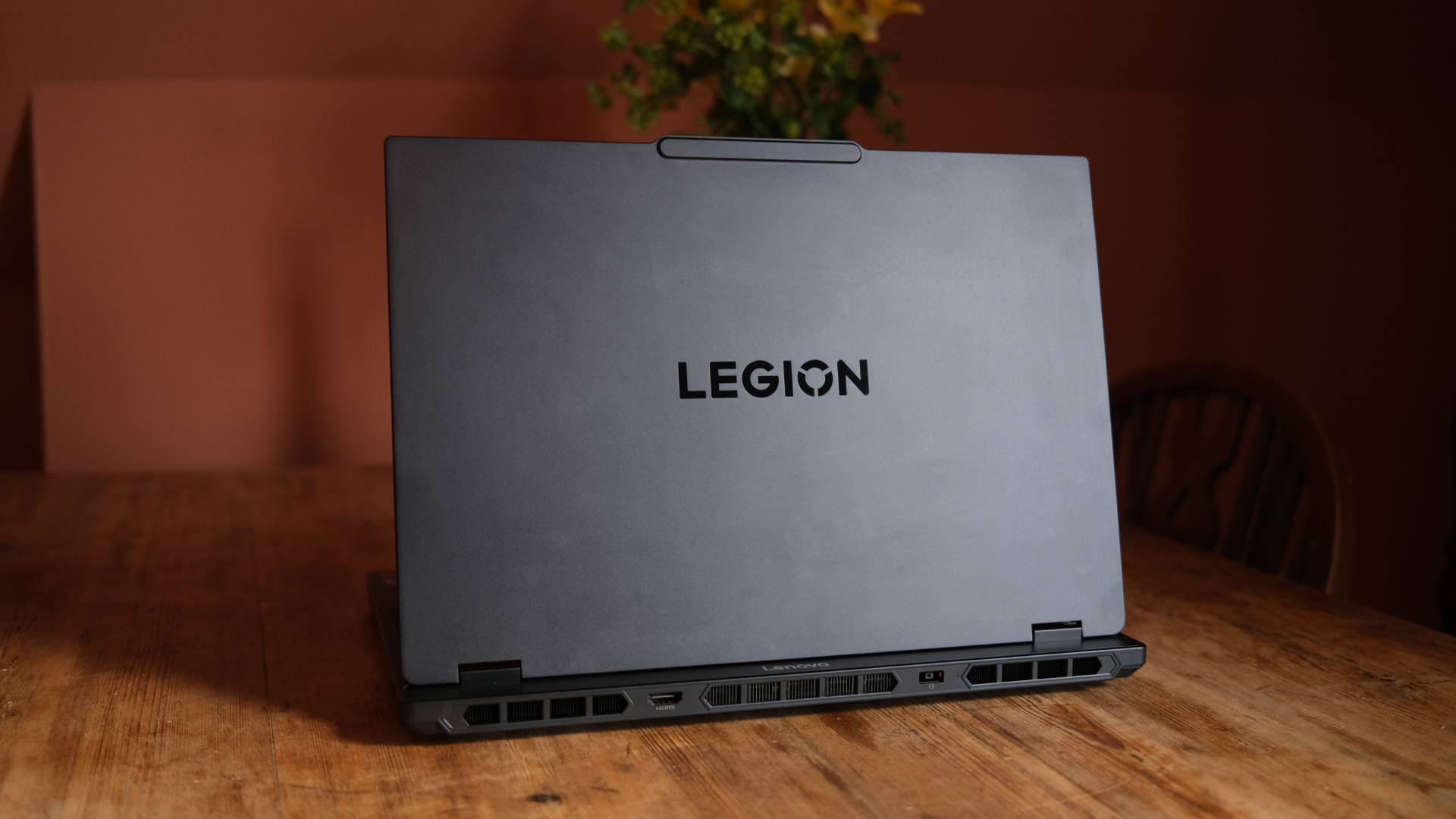
The Legion 5 looks pricier than it actually is, which is very rarely a bad thing. It has a simple design that I think some of the competition should take notice of. The laptop is black all over, and while it's far from the slimness of a high-end option like the Asus ROG Zephyrus G14, it's slim enough to feel genuinely portable, which is key.
When closed, there's a subtle Legion logo on the top of the laptop, with a supplementary Lenovo logo on the back. This brings me to the one negative point I have on the design front: the laptop has a larger footprint than its display would suggest, thanks to the inclusion of a protruding rear. This is really common in gaming laptops now, but I'm never going to love how it looks.
Opening the laptop up is easy thanks to a small protruding lip, which also houses the webcam (which lacks a mechanical privacy shutter, sadly). Once open, you can see the full RGB-backlit keyboard – which includes a small but still present numpad – and the medium-sized trackpad. I can't criticise that last point, since trying to game on a trackpad would mean you're already barking up the wrong tree.
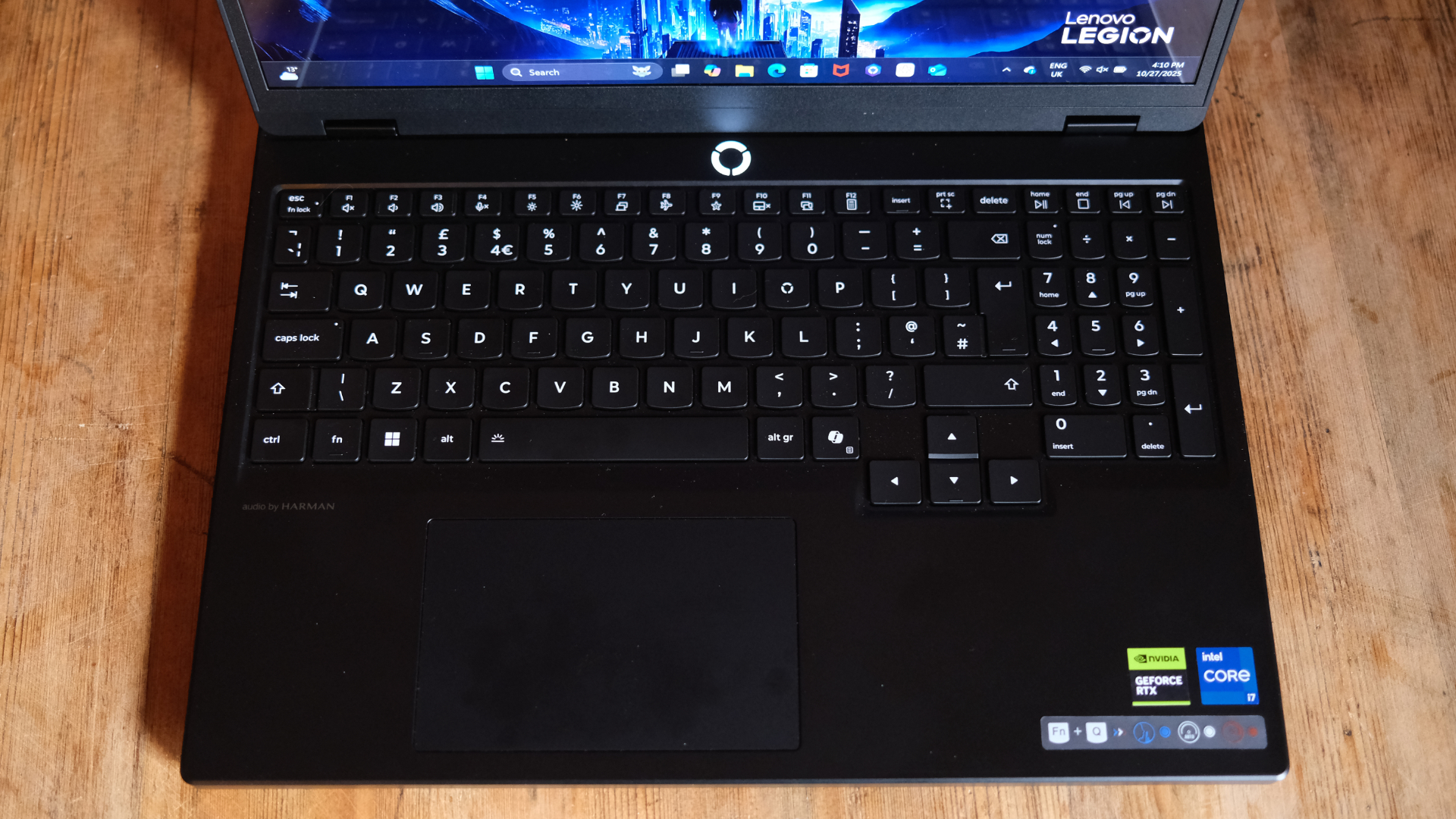

There's a single power button to turn the machine on, and other than that, there's no real ornamentation. Above this, of course, you'll find the 15.1-inch WQXGA (2560 x 1600) OLED display, which is very much one of the stars of the show.
Normally, an OLED laptop would set you back quite a lot more than the Legion 5's price tag. However, it does have one flaw – it's extremely shiny and reflective. I don't imagine many people gaming on this machine in full sunshine, mind, but it's worth knowing about – just in case you play in a sunspot.
In terms of ports, the left side of the machine houses a USB-A port and two USB-C ports (one rated for 65-100W power delivery, and both with DisplayPort 2.1), as well as an Ethernet port.
The other side has another two USB-A ports, a 3.5mm jack for audio, and a switch to block the webcam at a software level (which is better than nothing, even though I'd prefer a physical shutter).
Finally, the back of the laptop offers up an HDMI out and the main power socket. Nothing more to see here, despite its design protrusion.
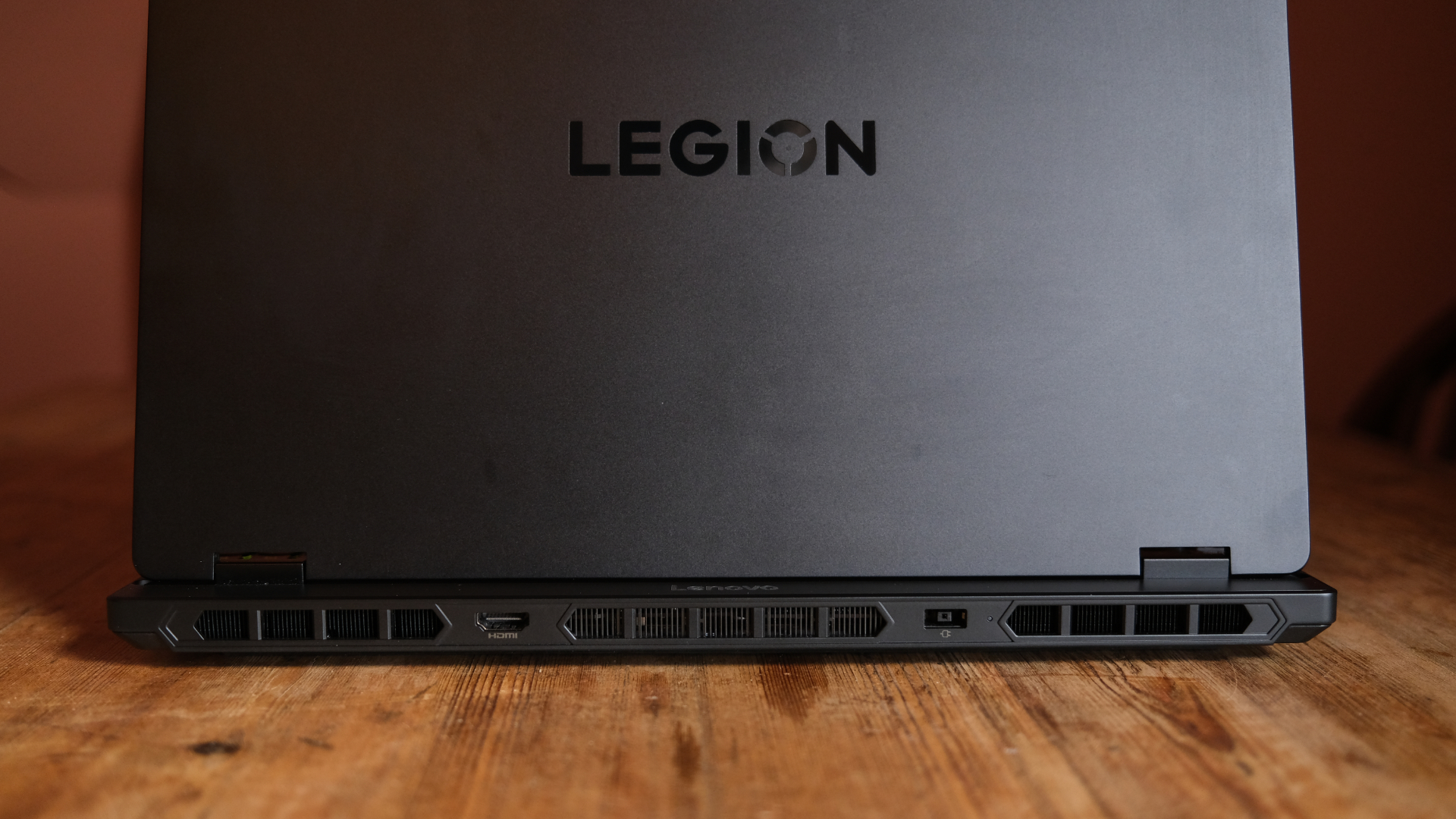
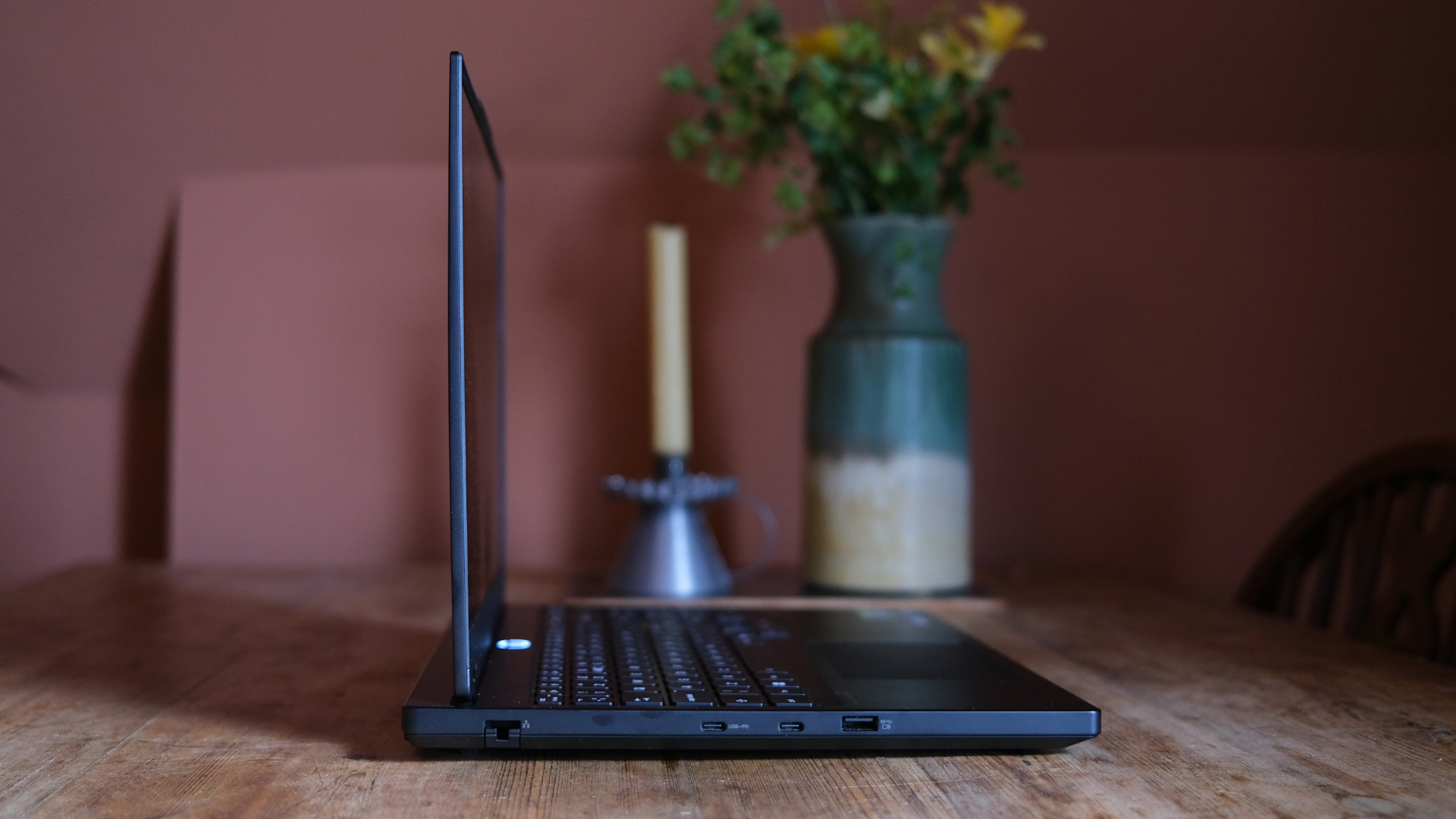
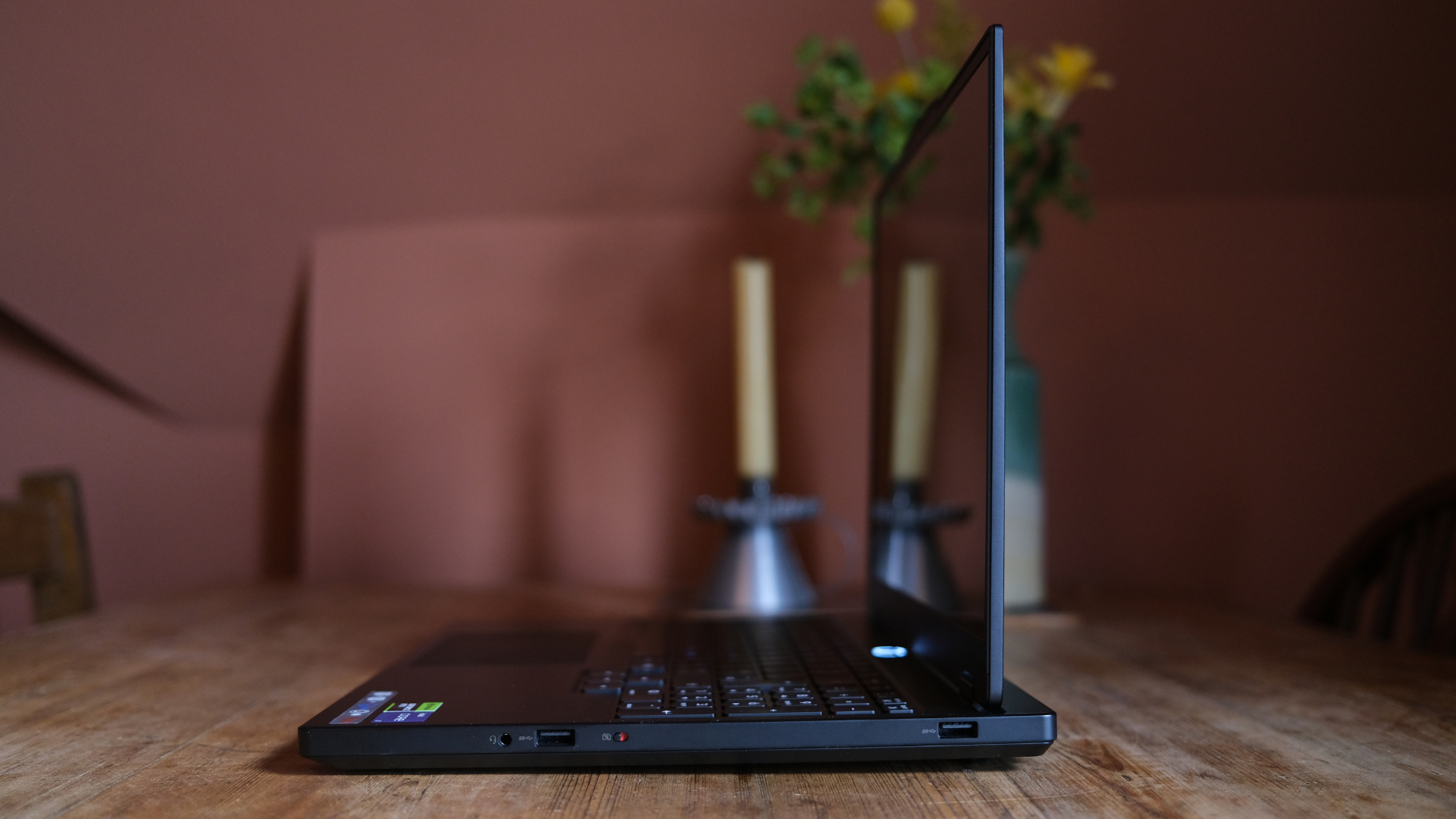
Moving onto what's under the laptop's hood: it comes with an AMD Ryzen 7 260 Processor, clocked to 3.80GHz, but able to push up to 5.10GHz.
That's not the most beastly processor ever, but it's enough to stop you getting CPU-bound – and at a fair price. My slightly pricier review model swapped this out for an Intel Core i7 chip, and garnered very decent results.
It's paired, of course, with an Nvidia GeForce RTX 5050 Laptop GPU in the most basic configuration. Although the version I tested housed a more powerful 5060 card – and I'd go for the 5060 if I had a choice. Either way, you'll get 16GB of DDR5 RAM to go with it, and a 512GB SSD (another slight shortcut, but it's expandable if you need).
So, from a design perspective, I have no deep complaints at all about the Legion 5, which feels like an impressively careful and muted gaming laptop for the money. From a purely specs viewpoint, I think it's clearly potentially superb value... So how's it been actually gaming on it?
Performance and display

Returning to the subject of that 165Hz OLED display – because it's really is worth dwelling on – and this is a seriously nice piece of kit, which I'd be solidly impressed with if it were on a more expensive machine.
The display has the lush colours and deep blacks that come with the territory, and at 2K resolution, it's also super sharp; again, if this had been a straight 1440p screen at this price then I don't think anyone could have complained at all.
As it is, it makes the laptop a great all-rounder, since it's not just games that look great on OLED screens, but also movies and, well, basically any content. It's also at an aspect ratio of 16:10, which I prefer to squatter options, not least since you get more screen real estate out of it.
Of course, gaming is the focus here, so I used the laptop to run through a whole heap of Battlefield 6 matches to see how it held up. The short version? It's a great little performer, capable of getting impressive results from modern games (setting aside the thorny question of optimisation, which is a developer issue).
If you ignore the bells and whistles added in Nvidia's 50 series cards, you can play the game quite happily on a mixture of medium settings at a good resolution and enjoy 60fps performance in multiplayer while still enjoying nice visuals. However, as with every 50-series laptop I've tested, frame generation is a total game-changer.
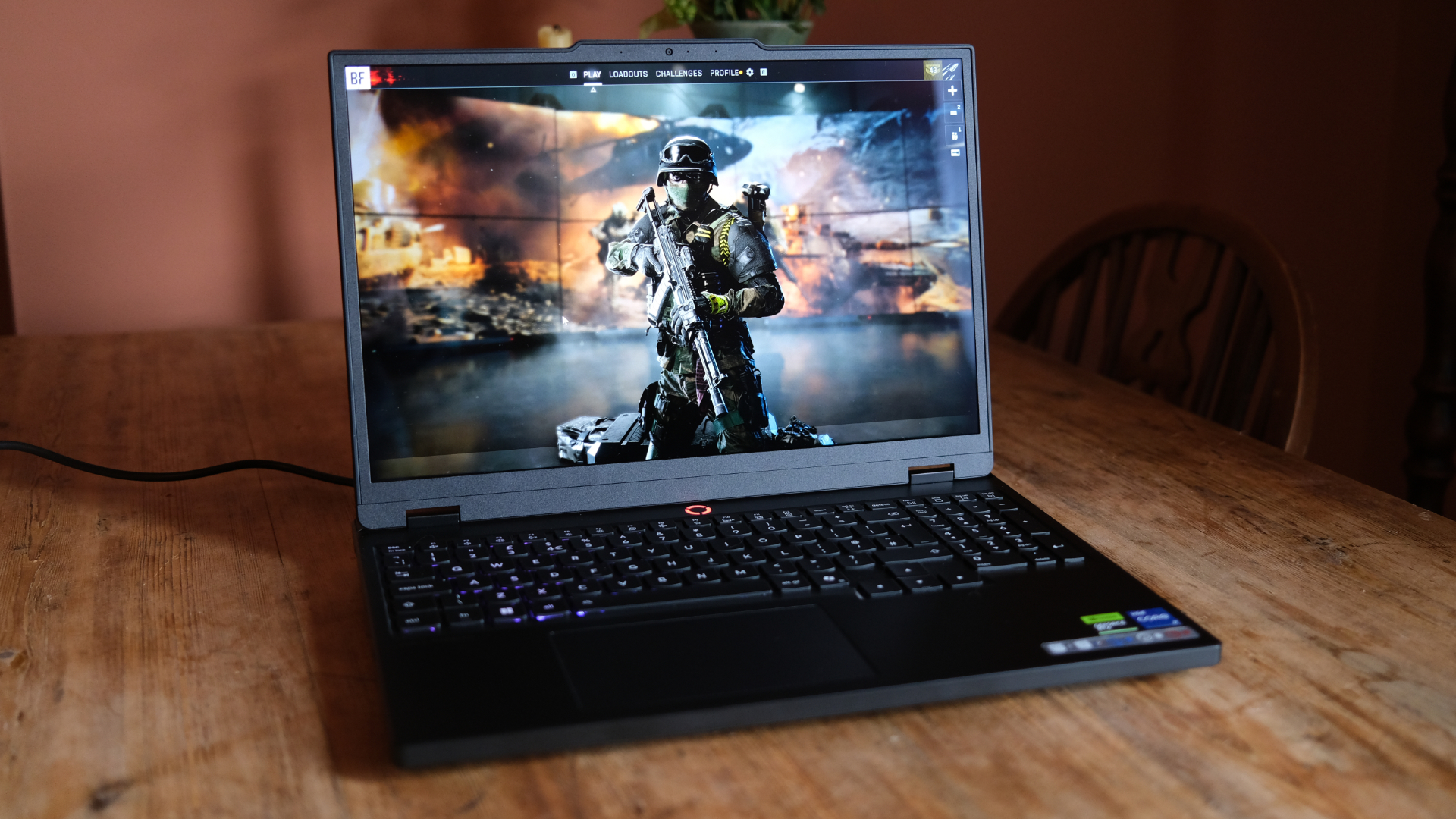
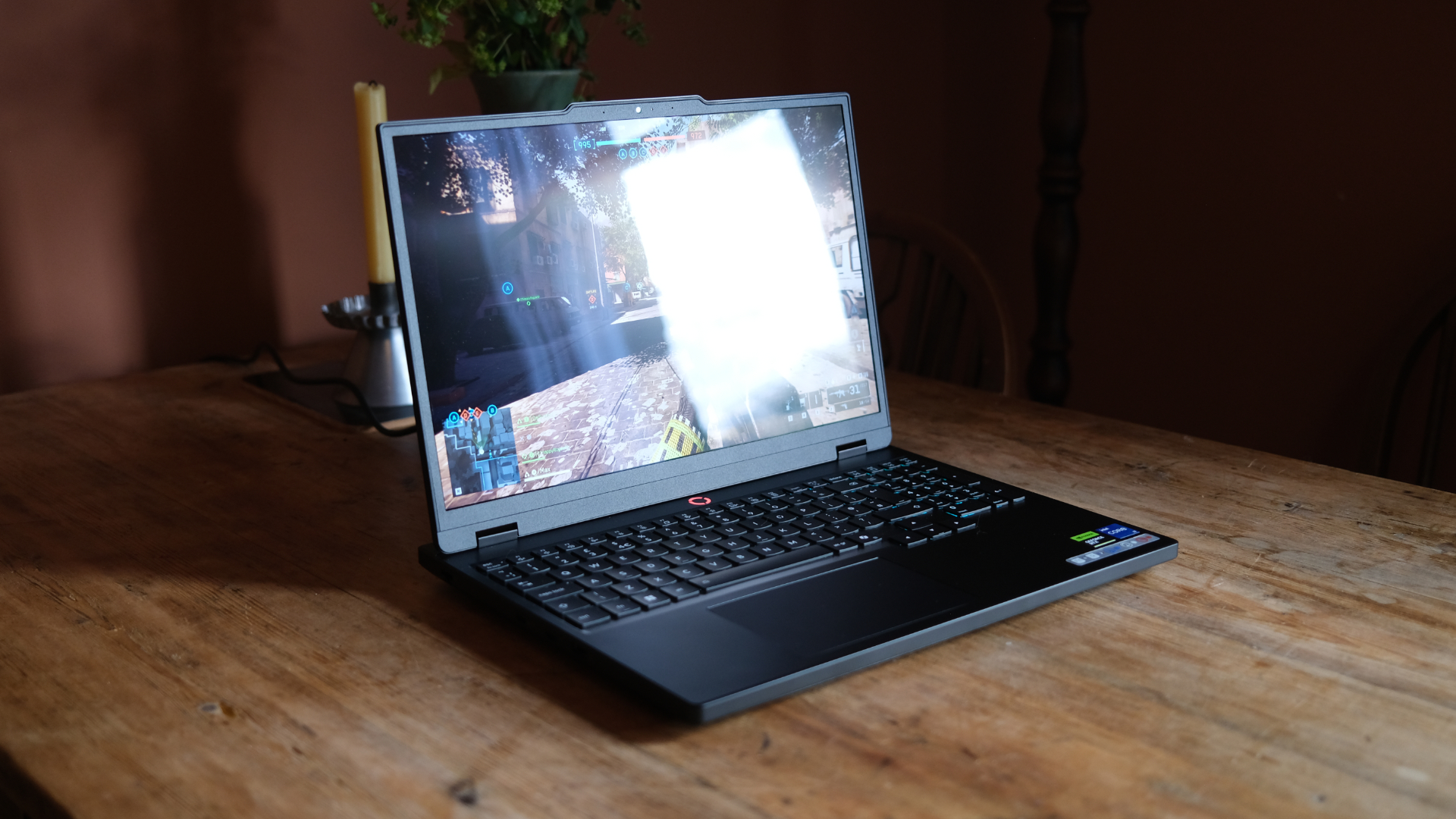
On those same settings, in some circumstances, I tripled my frame rate to upward of 180fps, without tweaking anything else, and without even maxing out the frame generation's intensity. Crank this up further, and you can enjoy super-smooth frame rates on much higher settings, and I really think it'll only have downsides for the pixel peepers who probably aren't shopping at this price in the first place.
You can apply that experience to other titles easily, too – Doom: The Dark Ages runs like even more of a dream, and can similarly feel superb in motion, while anything less demanding can be buttery smooth even at native resolutions. If there's a caveat, it's the classic one for almost any gaming laptop: this thing runs loud, with fans that you can't really ignore (or play over without one of the best gaming headsets out there).
In terms of the actual user experience, meanwhile, I'm similarly happy with the keyboard on offer here. It has a decent amount of travel, albeit it's not the clackiest at all – more on the spongey side. I'm not going to beat it too heavily for that, though, given the pricing. The trackpad is similarly really unremarkable, but as I've said before, I'm hoping you're only using it to open your games, not play them.
Verdict
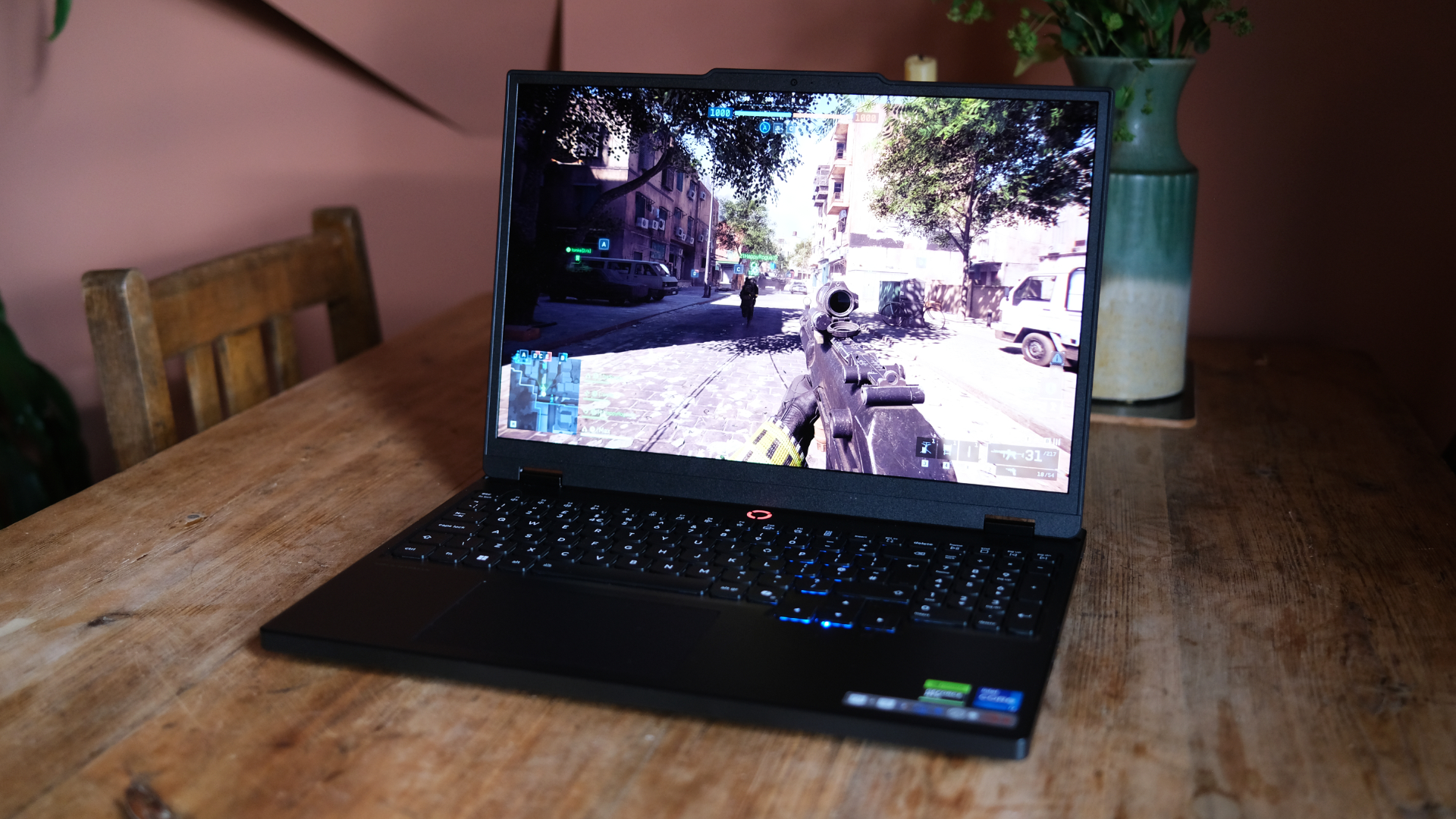
Testing high-end laptops can get you used to the high-end life, in terms of performance, so it's always a pleasant surprise when a machine with a very reasonable price manages to do extremely well for itself.
If I had a modest budget for a new gaming laptop, the Lenovo Legion 5 Gen 10 is the one I'd buy. It's as simple as that.
It's got excellent performance for the asking price, with the enormous benefit of frame generation moving forward, and its design is far more pared-back and simple than you might worry about.
Other laptop makers just got a proper shot across their bows – the Legion 5 is a real budget winner.
Also consider
At this sort of price point, the competition doesn't really match up to the Lenovo Legion 5, in my opinion, but those looking to spend a bit (or a lot) more have plenty of options.
At the very high-end, my favourite gaming laptop is the Asus ROG Zephyrus G14, which is a slimline wonder.
If you're less concerned about portability, though, and want something that has almost unbeatable power under its hood, perhaps the MSI Stealth 18 HX AI is for you – its huge display makes it a very different beast, though.







